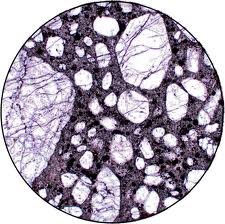Columbia University announces – New Preservation Journal

May 15, 2004 — Columbia University’s Graduate School of Architecture Planning and Preservation launches the inaugural issue of Future Anterior: Journal of Historic Preservation History, Theory and Criticism.
Historic preservation is at an important moment of rethinking. The field has grown exponentially in America since its first academic program was founded at Columbia University in 1965. Although initially concerned only with buildings, preservation has recently expanded to include the protection and creative interpretation of entire urban environments, landscapes, highways, cultural traditions, artistic practices, and even specific “experiences” such as historic view sheds. Most importantly, historic preservation is beginning a significant re-clarification of its purposes, sharpening and deepening its focus on the contributions old architecture and artifacts make to our understanding of the human condition and how we should address and live in it.
Future Anterior is the first and only journal in American academia to be devoted to the study and advancement of preservation, which brings together the interests of scholars and professionals in multiple disciplines such as architecture, art, history, philosophy, law, planning, materials science, cultural anthropology, conservation, and others. Future Anterior establishes an important and much needed forum for the critical examination of this expanding discipline, to spur challenges of its motives, goals, forms of practice and results.
The appearance of Future Anterior signals the maturation of the field of preservation and a shift away from nostalgic antiquarianism towards an active involvement in the understanding and creative transformation of human environments. This turn in preservation is reflected in an increased interest in historic architecture and artifacts as expressive resources of great public importance. The destruction of patrimony, from the colossal Buddhas in Afghanistan to New York’s World Trade Center, is seen not just as barbarism but as sources of understanding about where we are going wrong and what we need to do next. In response, architects, planners, urban designers, and artists have been producing works which engage the public in new ways of reflecting and taking on the past not as constraint but as provocation.
Jorge Otero-Pailos, Assistant Professor of Historic Preservation at Columbia University, founded Future Anterior as part of this rethinking and this provocation. The journal creates a much needed critical forum for advancing the understanding of the challenges and opportunities opened up by historic preservation’s better understanding of its purposes and its expanding boundaries in the arts and in public life. “The line between creators and curators is no longer distinguishable,” said Otero-Pailos, ‘as both are increasingly concerned with the historicity of their work and with its interpretation as such by specialized and general audiences.” Examples of this new cultural condition can be found the work of filmmakers such as Bill Morrison, who splices decaying silent film footage into new narratives, or the current “Seeing Double” exhibition at the Guggenheim New York which features collaborations between artists and conservators. The theater arts
avant-garde is also exploring the historiographical questions raised by preservation. Doug Wright, described his current Pulitzer Prize winning Broadway play “I Am My Own Wife” as “a rumination on the preservation of history: Who records it and why? What drives its documentation?” And in public life the same questions guide preservationists in interpreting just what the World Trade Center stood for and what we should be doing in the aftermath of its destruction.
The publication of Future Anterior was made possible through the generous support of the Graduate School of Architecture, Planning and Preservation at Columbia University, and the Vinmont Foundation. Prof. Otero-Pailos chairs the journal’s Editorial Board which includes: Paul Byard, Director of the Historic Preservation Program at Columbia University; Barry Bergdoll,
Professor of Art and Architectural History at Columbia University; Jean-Louis Cohen, former Director of the French Institute of Architecture in Paris; Andrew Dolkart, Fitch Professor of Historic Preservation at Columbia University; Mark Jarzombek, Professor of History and Architecture at the Massachusetts Institute of Technology; Hélène Lipstadt, Director of Documentation and Conservation of the Modern Movement US; Fernando Marías, Professor of Art and Architectural History at the Autonomous University of Madrid; Daniel B. Monk, Professor of Peace Studies and Director of Peace Studies Program at Colgate University; Joan Ockman, Director of the Buell Center for the Study of American Architecture at Columbia University; Marc Treib, Professor of Architecture at the University of California, Berkeley; and Gwendolyn Wright, Professor of Architectural History at Columbia University. The journal was produced by a student editorial staff including: Robert Garland Thomson, Editor-in-! Chief; Jacqui Hogans, Assistant Editor; and Darby Noonan, Design Editor.
Future Anterior is published semi-annually by the Historic Preservation Program, Graduate School of Architecture, Planning, and Preservation at Columbia University.
For information please contact:
Prof. Jorge Otero-Pailos
GSAPP, Columbia University
(212) 854-1172
or futureanterior@columbia.edu
For subscription information write to:
Future Anterior
400 Avery Hall
Columbia University
1172 Amsterdam Avenue
New York, NY 10027
or visit:
www.arch.columbia.edu/futureanterior
Zdroj/Source: ICOMOS

